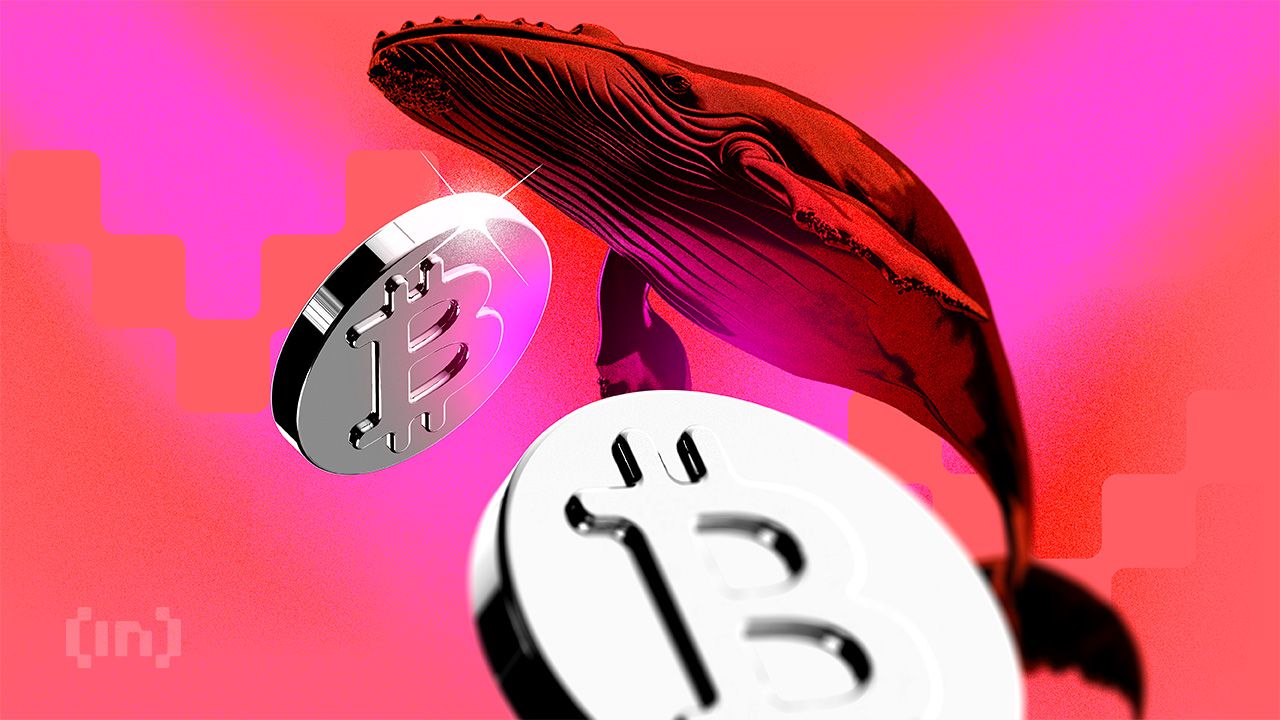When you think of Bitcoin, do you imagine lines of cryptographic code or shiny metal coins? The heart of Bitcoin lies in its digital form, with complex algorithms governing its existence on the blockchain. Yet, there are tangible versions too, like Casascius Coins that bring a unique twist: their artistic designs conceal the private keys.
This duality of art and currency raises an intriguing question – how do these physical pieces relate to the Bitcoin you own or trade online? Let’s explore the paradox where virtual currency and tactile art converge in unexpected ways.
Key highlights:
- Bitcoin is a digital currency manifested as code, operating through a C++ blockchain of approximately 77,000 lines.
- Bitcoin addresses have 26-35 alphanumeric characters, with variations including standard, compatible, and Bech32 starting with “bc1”.
- Physical representations, like Casascius Coins, offer tangible connections with Bitcoin, often as collectibles without intrinsic digital value.
- Bitcoin art reflects economics, technology, and societal progress across various mediums.
- Physical coins can cause misunderstandings and potentially lead to financial risks due to their lack of actual Bitcoin value.
The core of Bitcoin: What it looks like in code
Bitcoin rests on a foundation of binary code that supports a decentralized ledger known as the blockchain.
At the core of this structure, transactions are stored as unspent transaction outputs (UTXOs), and Bitcoin wallet addresses are encoded in a compact, efficient way to guarantee secure ownership transfer.
The blockchain code
Blockchain code is the foundation of Bitcoin, with thousands of lines crafted to execute its decentralized currency functions. I’ll be honest, we’re dealing with a digital marvel here. Bitcoin’s existence is purely virtual, without any physical embodiment.
This digital code operates within the architecture of a thorough Bitcoin wallet, seamlessly translating binary digits into the functional elements of this cryptocurrency powerhouse.
The blockchain code is the core driving force. With around 77,000 lines of C++ code, the Bitcoin Core client orchestrates the entire operation.
A snippet of Bitcoin’s code, written in C++.
You can think of it as a concert where every note (or line) must be perfectly timed to maintain harmony. Transactions are represented via UTXOs. They flow through the blockchain, a public ledger that’s always evolving, thanks to Bitcoin mining.
Cryptographic techniques, including the robust SHA-256 hashing algorithm, underpin the integrity and verification of blocks which shields the system from fraud.
Bitcoin wallet address structure
Bitcoin wallet addresses serve as the digital identity of your transactions on the blockchain. Each Bitcoin address is a string of 26 to 35 alphanumeric characters that uniquely identify your funds without giving away your entire transaction history. Think of it like your email address, or a bank account number, but specifically for receiving digital currency.
Typically, these addresses start with a ‘1’ or ‘3’ for standard addresses, or ‘bc1’ for the more streamlined Bech32 addresses.
The formation of a Bitcoin address is a fascinating process. It starts with a public key, which undergoes several cryptographic steps to become your wallet address. The address is then encoded with Base58Check, a method designed to weed out easily confused characters like ‘0’ and ‘O’. This helps prevent errors when inputting addresses so that your transactions go where you intend.
Before you use a Bitcoin address, I’d always suggest that you verify it with a small test transaction.
Each address’s uniqueness guarantees transactions are secure and transparent without compromising your privacy. This is at the core of what makes using Bitcoin a secure and efficient experience.
Visual representations of Bitcoin in the digital space
In the digital domain, Bitcoin is often symbolized by the ubiquitous ₿.
When using digital wallets and exchanges, you’ll notice Bitcoin’s presence through interfaces that facilitate transactions, capture market trends, and portray account information.
Bitcoin symbols and logos
The Bitcoin symbol ₿ (with two vertical strokes) signifies one of the most revolutionary shifts in finance. It reflects Bitcoin’s core as a digital asset, separating it from traditional currencies.
Bitcoin’s official logo complements the symbol: an orange circle featuring the white “B” with those defining vertical lines. The whole logo is usually slightly slanted to the right:

This logo is straightforward but bold. It’s easily recognizable in a sea of digital assets. With branding that leans into modern fonts and technology-aligned colors, Bitcoin reinforces its role as a forward-thinking financial icon.
Bitcoin in wallets and exchanges
When you open a digital wallet, you won’t see a graphical depiction of Bitcoin itself. Instead, the interface showcases your balance, transaction histories, and QR codes.
What you see are Bitcoin’s public and private keys, stored securely within the application, yet unseen by the naked eye. It’s an invisible gateway to your virtual assets.
Each transaction you make logs into the blockchain as unspent transaction outputs (UTXOs), which is visualized through ledgers rather than physical coins.
Wallets don’t depict Bitcoin as traditional currency symbols; instead, Bitcoin exists as unique identifiers, like alphanumeric wallet addresses.
Physical Bitcoin: A tangible representation
So, if the real Bitcoin is not tangible, does physical Bitcoin even exist? The answer is, surprisingly, yes.
Several companies made physical Bitcoin in its early years, but among these, Casascius Coins were the most popular, made by the company of the same name. They offered tangible tokens enhanced with artistic designs and security features like holograms and QR codes.

Casascius Coins were the most popular physical Bitcoins.
Physical Bitcoin coins as collectibles
Physical Bitcoins are an intriguing aspect of the cryptocurrency world. It offers collectors a tangible linkage to Bitcoin’s digital revolution.
These physical Bitcoins typically contain a private key hidden within tamper-resistant packaging. This feature provides not just a collectible item but a secure way to store Bitcoin value.
Designed with an artistic flair, they often include security elements like holographic stickers and QR codes, which allow owners to redeem the associated Bitcoin securely – though they’re nowhere near as secure as hardware cryptocurrency wallets.
Their dimensions, generally ranging from 25mm to 40mm in diameter and 1.5mm to 3mm in thickness, offer a substantial feel, not dissimilar to fiat coins.
Collectors and investors often pursue limited edition designs, drawn to their rarity and the story each piece tells.
Casascius Coins: The pioneer of physical Bitcoin
Casascius Coins were among the most sought-after collectibles in the physical Bitcoin sphere. Created in 2011, each coin came in denominations like 0.5 BTC and 1 BTC, and you could redeem them by peeling off the holographic sticker to access the private key. This innovative Bitcoin look made them much more than a simple novelty.
By 2013, the manufacture of Casascius coins ceased. Their growing rarity has boosted their allure and value in some collector’s eyes. In some cases, a physical Bitcoin could have a higher value than the actual asset.
But why do some collectors value these pieces so much? It’s simple: they represent a unique period in Bitcoin’s history, the infancy of digital currencies. Some people collect medieval artifacts. Some collect ancient weapons. And some collect Bitcoin coins.
Differences between real Bitcoin and physical coins
When you think about Bitcoin, remember it’s entirely digital, existing only as code on the Internet.
These tangible coins, although intriguing, are surrounded by common misunderstandings about their value and utility.
You should be aware that while buying these coins might seem like an investment, they carry risks, including the potential loss of actual Bitcoin value when collected without understanding the nuances of digital currency.
The reality: Bitcoin is intangible
Bitcoin realistically only exists in the digital domain. It’s an intangible asset, born out of binary 0s and 1s, entirely devoid of any concrete representation.
Transactions that occur on the Bitcoin network do so through UTXOs on a decentralized blockchain. This system processes activity without reliance on any physical medium.
To consider the intangibility of Bitcoin, let’s explore why these digital aspects matter:
- Bitcoin’s existence is purely digital, coded in about 77,000 lines primarily of C++.
- It relies on digital signatures found in wallets so that all transactions are securely contained without tangible elements.
- Those gold-colored souvenir coins? They’re just decorative, with no real Bitcoin value or function.
Bitcoin is a digital currency. And even more than that, it’s a shift towards a future that’s less reliant on physical money.
Risks and misunderstandings
You might come across shiny, gold-colored coins marketed as a physical representation of Bitcoin. However, these coins lack intrinsic value and are probably just souvenirs. They can’t substitute the real digital currency recorded on the blockchain.
This misconception can fool investors into believing that owning these decorative items equates to holding actual Bitcoin, which it doesn’t.
Physical Bitcoins, sometimes collectible, may feature unique aspects like private keys hidden under tamper-evident holograms. Although these features might distinguish genuine tokens from counterfeits, they still carry significant risks.
Exposing those private keys during transactions can do more harm than good. It can often result in you losing your assets or having them stolen. If you’re not cautious, a seemingly harmless souvenir could lead to financial disaster.
Also, the value of these collectible coins can sway independently of Bitcoin’s market price. While some may command high premiums based on rarity and demand, this doesn’t mirror Bitcoin’s actual value.
The physical representation of Bitcoin is fascinating, but not likely to be profitable in a safe environment.
Bitcoin as a cultural phenomenon
Bitcoin’s cultural impact is almost as significant as its financial one. Its physical representations, like collectible coins or artistic interpretations, contribute to a growing identity that goes beyond the world of finance.
In many ways, Bitcoin has become a symbol of resistance to traditional financial systems. This symbolism is shown in art galleries, public exhibitions, and digital platforms where creators celebrate its disruptive power and use it in creative ways.

Bitcoin art is slowly but surely growing in popularity.
Also, Bitcoin art fosters a sense of community and shared ideals among enthusiasts. From limited-edition prints to large-scale installations, these representations show Bitcoin is more than just a currency. It’s a cultural movement that challenges the status quo and inspires new possibilities for human expression and financial independence.
The bottom line
Bitcoin comes in different forms. Its digital form, coded and stored in a blockchain, is mirrored by physical representations like Casascius Coins. But, Bitcoin’s true, real form is a digital one.
While these physical coins bring a tangible, artistic element, remember that their value might not match the true Bitcoin exchange rate. Still, it doesn’t mean you can’t appreciate Bitcoin’s complexity and potential. Use its digital depth or enjoy its physical artistry, or why not both? The choice is yours.
As we’ve established, owning physical Bitcoins does not equate to actually owning Bitcoin. If you do want to own BTC, I recommend you buy it on the safest crypto exchanges.
Source: https://coincodex.com/article/60207/what-does-bitcoin-look-like/









Leave a Comment